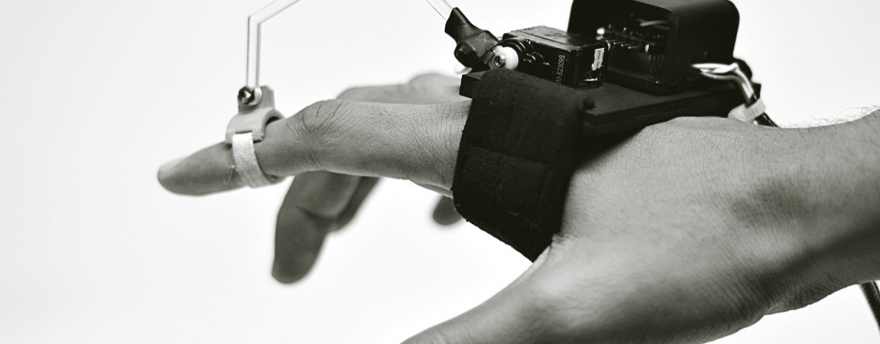If the early days of your time at design school were anything like mine, you probably look back fondly (maybe a bit too rose-tintedly) on simpler days of ‘getting back to basics’ with hour after hour of practice drawing free-hand straight lines, ellipses, and cuboids in perspective (kids still do this these days, right?)—developing all the basic building blocks for the sketching skills you now wield so expertly.
the radical impact robotics could have on human life and culture
As AI, algorithms and robotics continue their seemingly inevitable march towards human usurpation, could this nobel tradition be next in line for a bit of technology rendered redundancy?
Saurabh Datta is a recent grad of Copenhagen’s Institute of Interaction Design, whose final year thesis work set out to explore the increasingly complex relationship between the agency of intelligent technological tools, and our own free will and human faculties.

Datta’s first thought experiments and prototypes explored a perhaps not-too-distant future where learning to play the piano is dramatically changed, or made redundant, with the use of a strap-on device that physically manipulates the fingers into tuneful performance—later augmenting the experiment with a complementary contraption to move the wrist simultaneously.
Does robot-empowered repetition lead to real learning?
Part-intriguing, part-amusing (with only a pinch of disturbing), these experiments point to the radical impact robotics could have on human life and culture—what if a complete beginner could strap in their hands and perform a pre-programmed masterpiece? Could this be a new, faster way to learn or could it spell the end for hard-earned skills?
Datta soon shifts focus to experiment with the simulation of another hand-skill—sketching. Grabbing the drawer by the forearm, Datta’s free-hand cheat-machine renders the desired shapes (rectangles or circles, for example) and corrects the movements of the drawers hands as they try to draw them. Similar to the pre-programmed piano masterpiece playing, this device presents the tantalizing possibility of sitting down, strapping in, and retracing the pencil strokes of a digitally recorded master draughtsman.
Although clearly rudimentary at this stage (apparently built in a week), Datta’s contraptions are an interesting glimpse into our possible future robot-assisted lives. This little experiment raises some interesting questions around the future of learning and design practice. Does robot-empowered repetition lead to real learning? What does this mean for the un-robotically enhanced? What do we lose (a lot I would suggest) when we disconnect the training of our appendages from the application of the mind?

